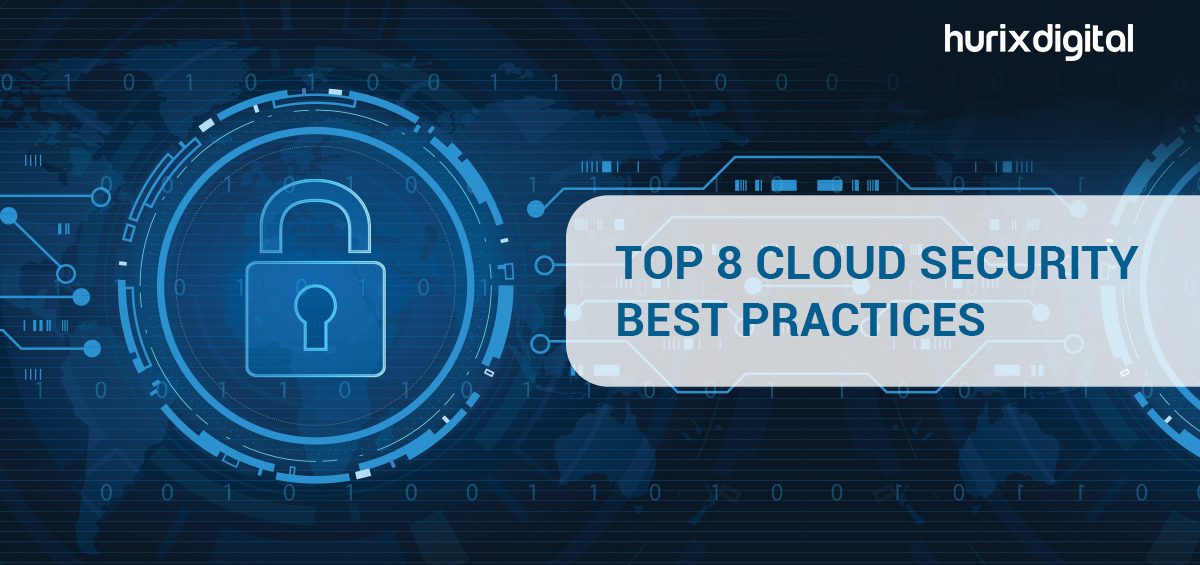Summary
The blog post explores best practices for ensuring cloud security. It emphasizes the importance of implementing robust security measures in cloud environments. It highlights the significance of strong access controls, including multi-factor authentication and role-based permissions.
Technology today has come a long way with an increased reliance on cloud computing in an enterprise setup. Recent times have seen cloud services completely transforming the way businesses work. Such is the disruption caused by a cloud infrastructure to the traditional business models, that studies predict public cloud spending to reach a whopping $500 billion by the year 2023. Although there are numerous advantages to adopting the cloud, security remains one of the primary areas of concern for enterprises. In this blog, we have focussed on some of the cloud security best practices that enterprises can adopt to ensure the safety of their data.
Continuous improvements in technological development have increased various types and forms of risks, including threatening viruses and malware or cyber thefts with malicious intent that the organizations and their sensitive data need to be safeguarded from.
Table of Contents:
Top 8 Cloud Security Best Practices
Here, we are discussing the top 8 cloud security best practices that allow you to strengthen your organization’s risk management strategy:
1. Access Control Management
While the cloud platform you pick can offer the right tools, it is up to you and your organization to set up the right access controls to ensure data safety. For instance, in cases of insider theft or social engineering, the only thing that can help you ensure data safety is the right access control policies.
It is important, therefore, that nobody gets access to the data stored in your cloud without proper clearance. The key here is to manage access control policies strictly that allow you to restrict the users attempting to enter your cloud environment.
The best way is to align access control settings with each employee’s job function so that they perform their role efficiently, leaving no scope for data misuse. The other way to improve access control management is by assigning specific rights and access policies to different users with the least privilege policy. This will help you ensure that the access rights for your high-level security administrators and low-level cloud users remain separate and easily manageable.
Also Read: Cloud Cost Management – All You Need to Know About Cloud Cost Management
2. Consistent and Rigorous Vulnerability Testing
To stay in control of the cloud security aspect of your cloud environment, it is crucial for your organization to maintain ongoing visibility into all of your cloud technology assets and services.
This can be done by constantly monitoring user activity by setting alerts to get an understanding and real-time information about the usage of your cloud infrastructure.
Further, to make sure that all the latest industry-leading vulnerability and incident response tools are properly implemented, stringent vulnerability testing and security to identify vulnerabilities and risks should be conducted by the enterprises on an ongoing basis, in fact it should be part of the SDLC process.
Not only will it offer a detailed insight into the loopholes and system gaps, but an automated security assessment will also be helpful in designing better solutions. This will be a great way to strengthen the overall security environment and minimize vulnerability.
3. Data Encryption
Encryption of data holds great importance when it comes to cyber security. To be able to fortify your cloud infrastructure security, you need to encrypt data of whatever nature and kind your enterprise has. The encrypted data in cloud infrastructure protects you from online cyber-attacks and helps you minimize the instances of data security breaches substantially. Encryption of data should be done during transit and at rest.
- Encryption in Transit: All data traffic should be encrypted using Transport Layer Security (TLS 1.2) with an industry-standard AES-256 Cipher.
- Encryption at Rest: It is recommended, however, to not rely on cloud service encryption as it gives the cloud service provider access to your encryption keys. To be able to fully control access, it is advisable to use your keys with a centralized encryption key management server to deploy stringent encryption solutions before uploading data to the cloud.
The focus here should be on implementing comprehensive data security solutions that enable you to locate any kind of sensitive or confidential information in the company’s network, endpoints, databases, and cloud storage units.
4. Offer Employee Training on Cloud Security Practices
Many times, the security threat to your cloud technologies isn’t from outside sources but from your organization and its employees.
To prevent this, conduct regular employee training so that any kind of misuse, either due to lack of knowledge or negligence, can be avoided. Training internal staff on best security practices related to cloud environments can help you prevent any kind of internal security threats.
Also Read: 6 Best Practices for Cloud Cost Optimization
5. Establish Robust Cloud Data Deletion Policies
Whether you have plans to migrate to a new cloud infrastructure or move back to an on-premise architecture, managing your old clients’ data should be the topmost priority. After a client’s data retention period (as specified in the contract) has ended, that particular client’s data should be programmatically deleted.
Organizations need to establish robust data deletion policies to safely and securely remove the data from the system while maintaining strict compliance at the same time.
6. Machine Learning for Threat Prevention
An increasing number of organizations have started using machine learning technology for identifying suspicious behavior and indicating threats to their cloud infrastructure.
Machine learning algorithms can help to boost your cloud security in many ways. For instance, it is equipped to detect if any of your confidential data is being repeatedly downloaded and alert you to keep an eye on such patterns.
It is important to note, however, that machine learning techniques should be used in conjunction with other security technologies to ensure that your cloud data remains protected all the time, and your cloud security is not compromised.
7. Pay Extra Attention to Multi-Cloud Environments
Managing security in a multi-cloud environment is especially tricky as the data resides on different platforms in this case. To ensure robust safety in such instances, organizations need to devise specific policies based on the data itself rather than the cloud platform where it resides.
8. Strong Password Management
Lastly, it is essential to follow a strong password management policy with measures including:
- Configuration of a minimum password length
- Resetting of local admin passwords every 90 or 180 days
- Configuration of specific settings for password complexity
- Enabling password auditing to track all password changes
- Synchronizing passwords using an enterprise password management system that enables you to maintain consistency across security systems
Further, make sure that both your organization and cloud computing vendor offer continuous security monitoring for all systems and environments.
To Wrap
The bottom line is that, irrespective of the cloud infrastructure/provider that your enterprise chooses, it is critically important to take complete ownership of your data and prioritize security as part of your overall cloud implementation strategy.
With a well-designed cloud security strategy leveraging the above-mentioned best practices for cloud computing, you can ensure that your employees contribute productively towards enhancing organizational growth while maintaining a safe and secure environment for data and applications with Hurix Digital.
Want to know more about cloud security solutions? Get in touch with us!









